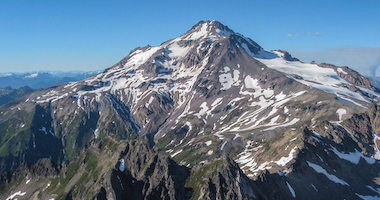Mount Rainier is undoubtedly awe-inspiring, but it also presents serious challenges that can catch even experienced climbers off guard. Whether you’re joining a guided expedition or venturing out on your own, it’s critical to understand—and prepare for—the mountain’s inherent risks. Below, we’ll explore the principal hazards climbers face on Rainier’s many routes and how to manage them responsibly.
Major Hazards on Mount Rainier
Climbers face a variety of hazards while ascending Rainier. Below are the most common risks and how they are managed on both guided and independent climbs.
1. Glacier Hazards: Crevasses and Icefalls
With 26 named glaciers, Mount Rainier is glaciated on an impressive scale. Crevasses—some shallow, others seemingly bottomless—pose a significant risk, especially when concealed by thin snow bridges. Icefalls, where big chunks of ice can break away and collapse without warning, are another concern.
Glaciers differ by route: the Ingraham Glacier on the Disappointment Cleaver (DC) route may present different crevasse challenges than the Emmons or Kautz Glaciers.
How RMI Guides Mitigate Glacier Risks:
- Expert route-finding ensures teams avoid unstable terrain.
- Teams travel roped up to prevent solo falls into crevasses.
- Guides carry rescue gear, including ropes, pulleys, and snow anchors, in case of a crevasse fall.
2. Unpredictable Weather and Whiteouts
Mount Rainier’s location and height create fast-changing weather, with sudden storms, high winds, and complete whiteouts that can disorient climbers.
How Climbers Manage Weather Risks:
- Guided Climbs: RMI teams monitor professional weather forecasts and adjust itineraries accordingly.
- Independent Climbers: Must be prepared to navigate in zero visibility using a map, compass, and GPS.
- Gear Considerations: Proper layering, waterproof shells, and insulated gloves are crucial for enduring extreme conditions.
3. Avalanches and Rockfall
Certain routes, such as Disappointment Cleaver and Liberty Ridge, are notorious for rockfall and avalanche hazards. Rockfall is especially prevalent in late summer, when melting ice loosens rocks from the slopes above.
How to Reduce the Risk:
- Climb Early in the Day: Cooler temperatures mean firmer snow and less rock movement.
- Follow Safe Route Selection: RMI guides continuously assess conditions to avoid high-risk areas.
- Wear Helmets: Protect against ice and rockfall during the ascent.
Altitude and Cold-Related Risks
Climbing above 10,000 feet brings the potential for altitude sickness, hypothermia, and frostbite. Symptoms of altitude sickness—headaches, nausea, dizziness—can impact performance and decision-making.
How RMI Helps Climbers Acclimate Safely:
- Gradual Ascent: Climbs include time at Camp Muir (10,080 feet) or Camp Schurman (9,460 feet) to adjust.
- Hydration & Nutrition: Proper fueling helps prevent altitude-related issues.
- Guides Monitor for Symptoms: If altitude sickness worsens, teams descend immediately.
The RMI Approach to Safety
RMI Expeditions has decades of experience leading safe and successful climbs on Rainier. Our approach to risk management, team safety, and expert decision-making is what sets us apart.
How RMI Keeps Climbers Safe:
- Professional Route Planning: Guides adjust routes based on daily conditions.
- Emergency Protocols: Teams are equipped with satellite communication, first aid kits, and rescue gear.
- Ongoing Skill Training: Climbers learn self-arrest, crevasse rescue, and glacier travel techniques during their expedition.
By understanding the hazards and preparing with expert guidance, climbers can reduce risk and improve their chances of a successful summit.
















